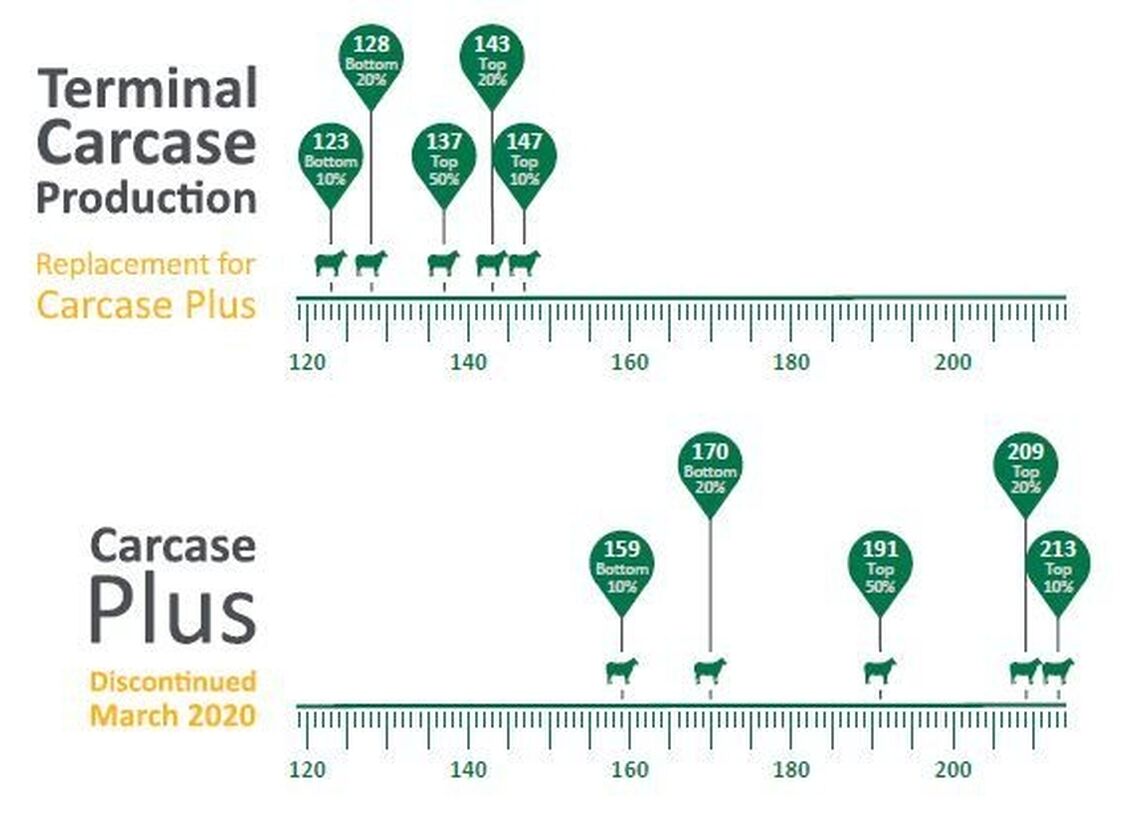The Australian sheep breeding value Lambplan index Carcase Plus has been an important index for the sheepmeat industry but it has been found to have a negative impact on eating quality. Because of this and the industry’s focus on delivering high eating quality outcomes for consumers, the index will be retired in March 2020.
Carcase Plus will be replaced with the Terminal Carcase Production index. To assist in the transition between indexes both Carcase Plus and Terminal Carcase Production were available for the 2019 ram buying season. The Terminal Carcase Production (TCP) index will give similar improvements in growth and lean meat yield as Carcase Plus while also maintaining eating quality.
What is the new TCP index?
Indexes help producers select animals for use within a breeding program when there are a range of traits of economic or functional importance. This ensures that genetic gain in one trait is not made in isolation from other traits. Using indexes in ram purchasing decisions allow producers to make balanced genetic progress towards more profitable sheep. The TCP index has been created to assist producers to achieve both gains in their major production traits, such as post-weaning weight and muscling, as well as ensuring consumer satisfaction from lamb is maintained through focusing on key eating quality traits such as shear force (tenderness) and intramuscular fat (marbling).
The TCP index is designed to suit a production system where:
- all progeny are terminal
- improving growth and muscle is of commercial benefit
- increasing lean meat yield has a positive financial impact
- a small degree of emphasis is included to maintain or improve eating quality.
This production system is for a prime lamb operation where terminal sires are joined to ewes of a Merino/maternal breed or cross. The TCP index focuses on increasing weight and muscle while reducing carcass fat, which contribute to higher lean meat yield. TCP also has emphasis on modest improvements in eating quality. In the Terminal Carcase Production system, growth and improved carcase eye muscle contribute the most to the index, with smaller contributions from carcase fat depth, lean meat yield and dressing percentage. Improvements in intramuscular fat and shear force contribute to maintaining lamb eating quality
Using the TCP index
The TCP index, unlike Carcase Plus, is on a scale that is aligned with other Sheep Genetics’ indexes and is represented in economic terms with a unit increase in the index reflecting an additional dollar per ewe joined per year. To assist in comparing rams, Sheep Genetics recommends using a percentile band table as reference. The figure below, which is based on the percentile band table, highlights the TCP index value for significant percentiles for the 2018 drop animals.
Figure 1 illustrates which traits are in the index and how much they contribute to the overall balance of the index. The longer the bar, the greater the impact on the index, and the greater impact on the profitability of the production system.

Comparison of TCP and Carcase Plus index values for significant percentiles for 2018 drop animals

Percentile band range graphic for TCP index 2018 drop animal